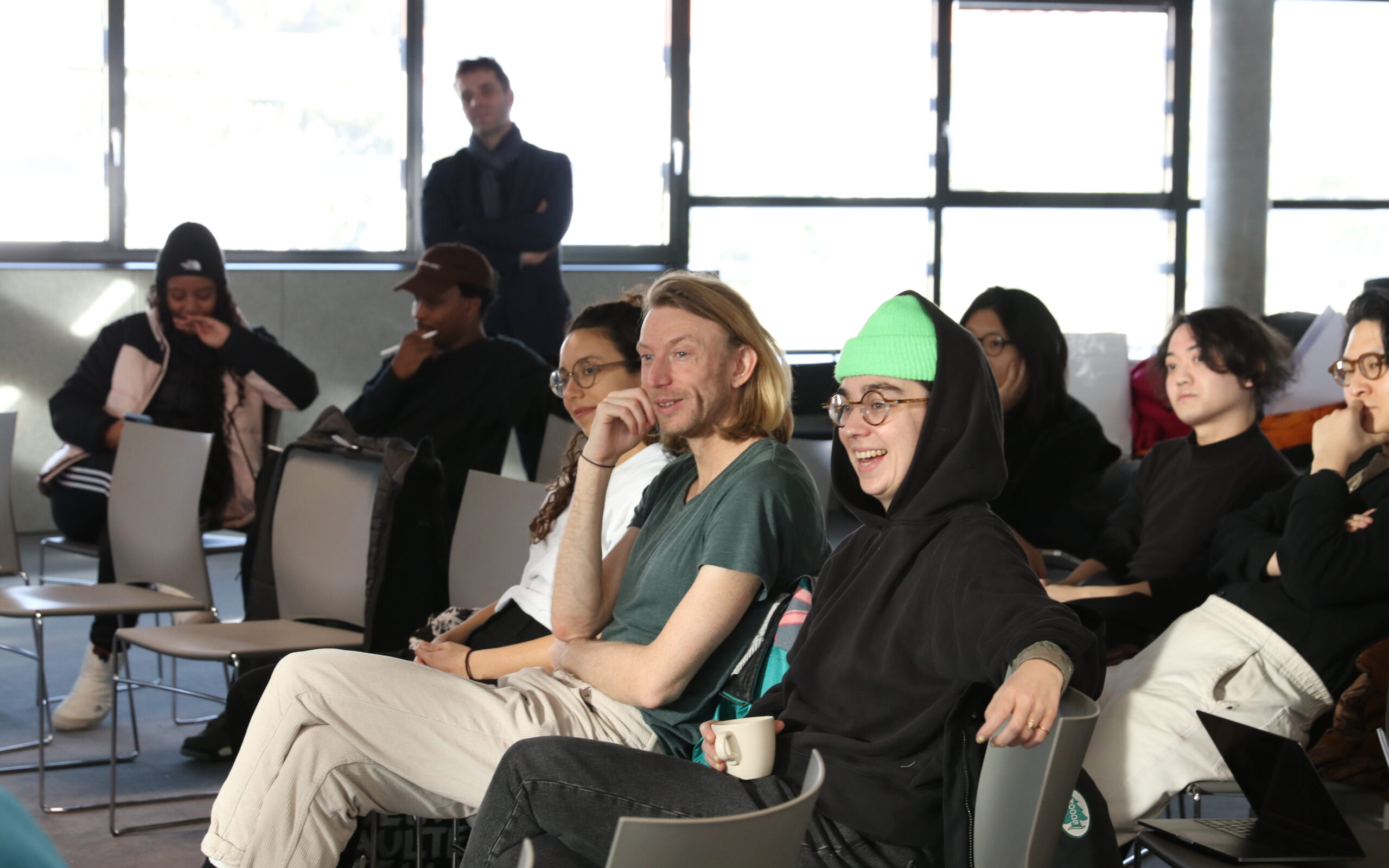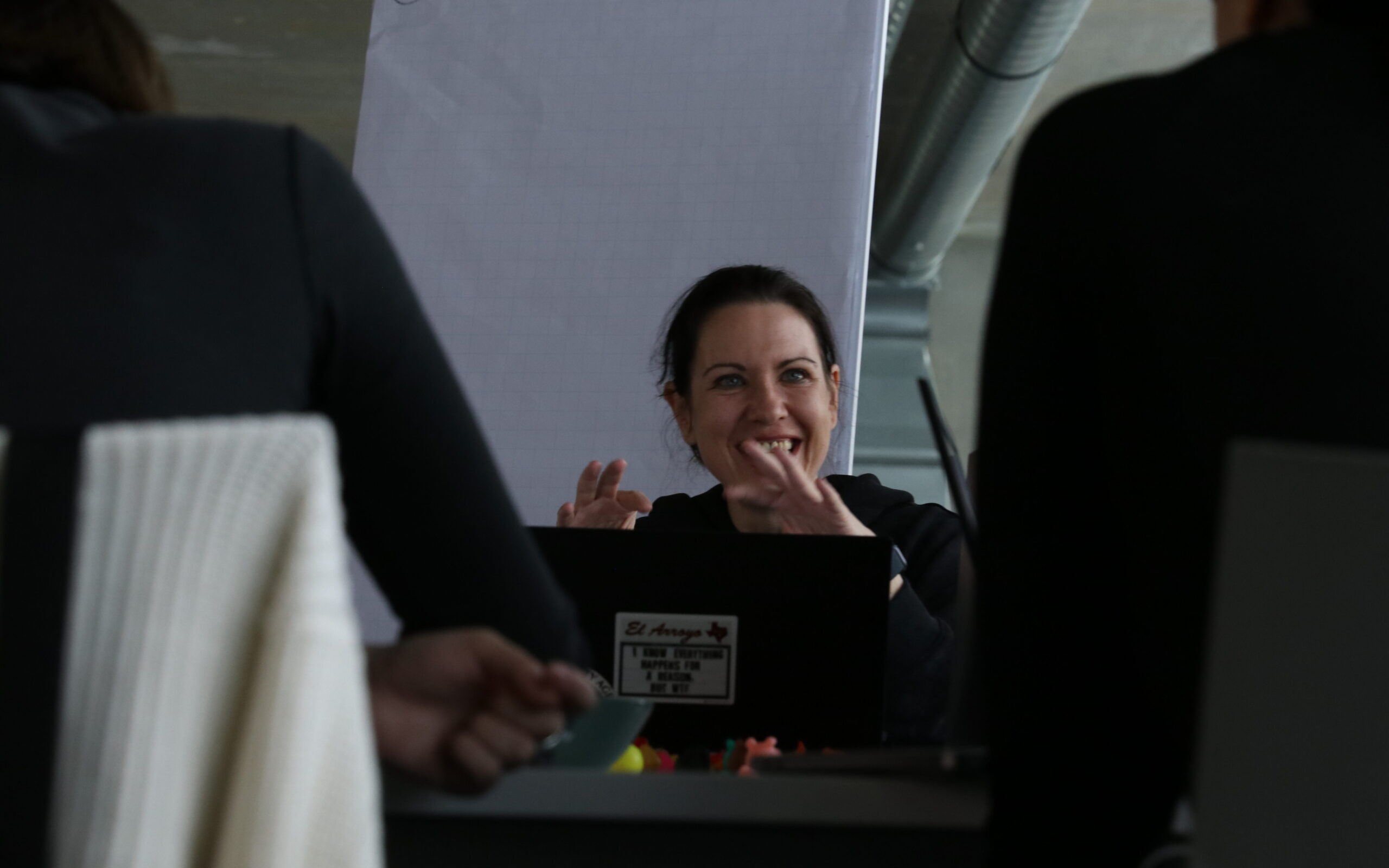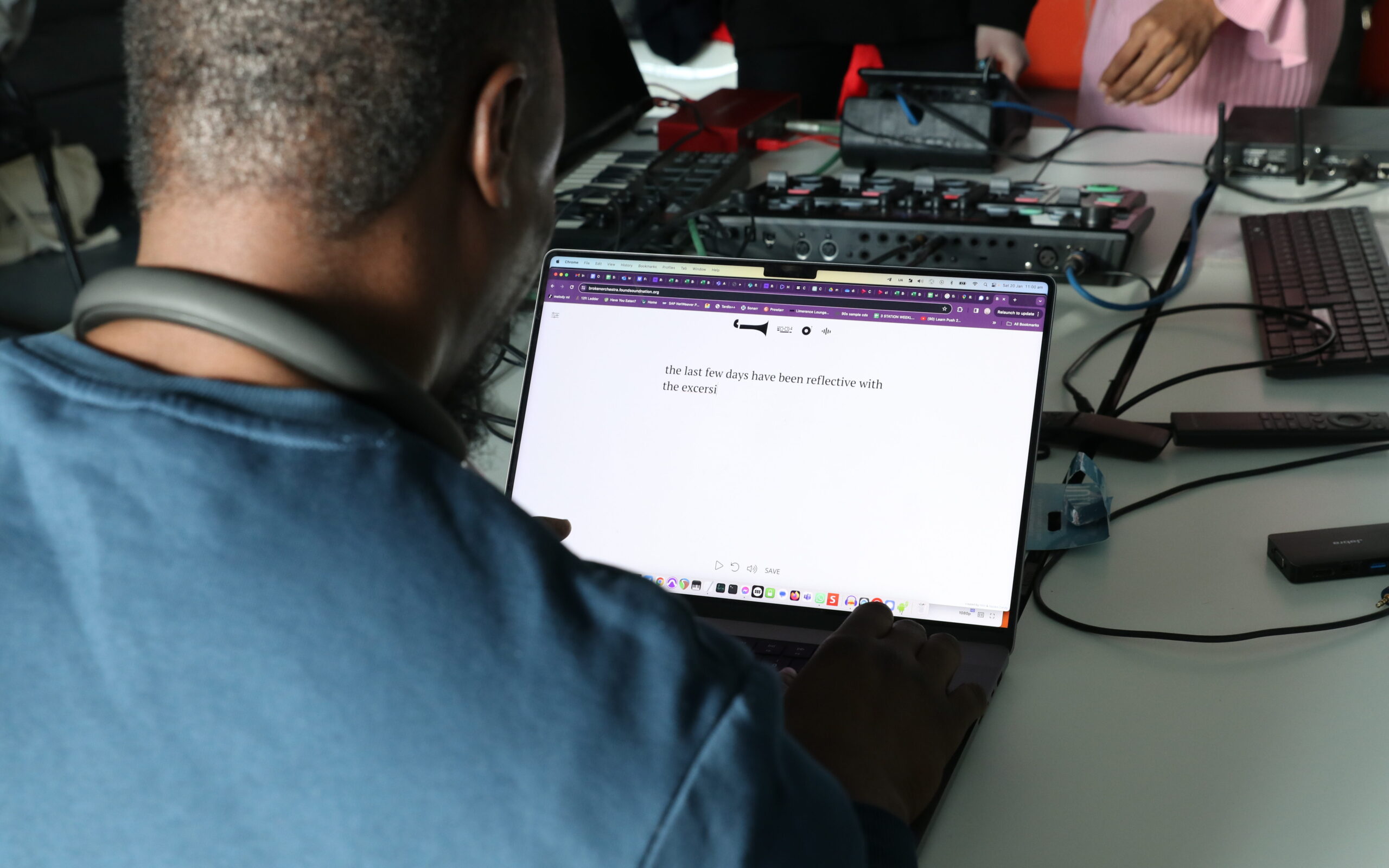In the fifth chapter of the FOUNDING LAB Fall Term students examine the incentives, tactics, and mechanisms of online news construction and dissemination.
Guest post by Denise Hirtenfelder in collaboration with Bart Grabski
Topics covered include the distortion of truth for clicks, identity and audience influence, and the limits of fact-checking and AI synthesis. Fellows include Ziv Epstein, a computer scientist and designer who is actively researching and developing advanced social computing tools to combat misinformation and address attention economy issues. Sarah Kriesche is a journalist who specialises in exploring technological innovation and its social implications in the science department of Austrian radio station Ö1. David McDonald is a creative sound designer at the Australian Broadcasting Corporation (ABC) in Sydney, working with Microsoft on machine learning synthetic voices, with a passion for audio storytelling and emotional communication. Umlilo Siya is a multidisciplinary artist whose work, rooted in the black and queer experience, spans music, fashion, 3D animation, VR, visual art and performance.
Over the course of four days, the Fellows explore a speculative future environment in which they create 30-second videos about their projects at four stations focusing on identity and microtargeting, the science of disinformation, the use of AI and language translation to manipulate truth, and the art of storytelling. The result is 96 videos that are combined into a single video montage in a joint synthesis session and presented in the Ars Electronica Center’s Deep Space 8K.

The first day of Chapter 5 starts with a spicy morning workout where students and fellows introduce themselves to each other with a short pitch of their ongoing semester projects and wild dance moves to kick-off the session. The sparkling start continued with the screening of the first 30-second project videos, which the students were asked to prepare as homework for the first session. These served as preparation for what was awaiting them over the next two days, as they rotated as small groups between the four Fellows and their stations.
The Fellows’ four stations, which the students visited on the second and third days, were entitled “Media Credibility with Ziv: Assessing credibility based on the affordances of digital media”, “Centrist Media with Sarah: Storytelling, presentation and your role in the process”, “Shock Jocks with David: Playacting a bad actor and intentionally misrepresenting ideas to gain attention”, as well as „Going Wild with Umlilo: Making deep fakes, virtual characters and playing with identity“.
Ziv’s session on ‘Platform Mitigations’ aimed to educate students about the science of misinformation. The approach was to explore how to detect and mitigate deepfakes while producing ideologically balanced stories tailored to platform audiences.

Sarah’s session focused on the journalistic approach to storytelling, providing students with a toolbox to create a story. The questions explored in her session were How do I want to tell a story? Is there a weakness in my project? Can I take the bad story and own it? What is the difference between me creating a story & Chat GPD telling a story? Why is a problem not solved?

In David’s session, students were tasked with designing a shock jock that focused on weaponising ChatGPT and language translation to manipulate the truth. The aim was to explore how to record audio from AI-generated scripts and map them to deepfakes, resulting in the creation of sketchy content designed to attract attention.

The session with Umlilo, which focused on the role of identity and micro-audiences, centred on the use of deepfakes and virtual characters to construct a virtual influencer and market a story to their audience.

On the fourth day of the fifth chapter, the students shared their thoughts on the four workshop stations. In general, the students enjoyed the process of ‘wrestling’ with AI and realised that it takes time to remix, change and reflect on their projects. The experience of immersing themselves in all four stations and creating a video for each allowed them to rethink the idea of achieving perfection with their term projects. For many, this was their first exposure to specific AI software, giving them the opportunity to think outside the box and explore the ways in which these tools could enhance or disrupt their project processes. While the students found the experience enjoyable, they acknowledged that AI has its limitations. Despite the many possibilities, some elements are difficult to overcome or interpret. Overall, the sessions successfully combined theoretical concepts with practical activities, encouraging students to think creatively and critically about the intersection of identity, AI and storytelling.

To conclude the fifth chapter, a best-off of the 96 AI-generated videos was streamed in Deep Space 8K. In the form of a mosaic, where all the videos are presented again visually, students and fellows try to make sense of the combination of the four media stations. Together they laugh, reflect and even mourn a little as the semester comes to an end with the completion of the next sixth chapter and we have to say goodbye to the FOUNDING LAB with heavy hearts.
